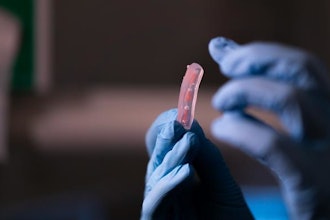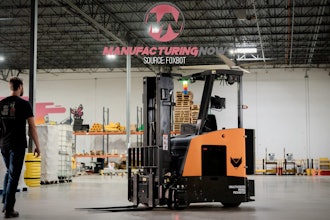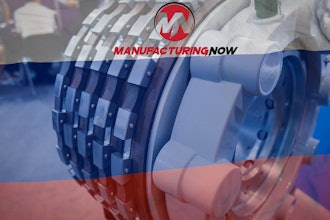Cleatus is a 14-Foot Tall 3D-Printed Robot
If there is one thing synonymous with Fox Sports it's Cleatus, the animated robot that takes you in and out of commercial breaks. Well, Fox Sports wanted a giant, real-life robot for the company's lobby. For this, they hired Thingergy, a design firm based out of Burbank, CA that "makes things", which is only partially accurate -- the company makes awesome things, typically for the entertainment industry, such as a real-life sculpture of Pogo from The Umbrella Academy.
Cleatus is a massive, 14-foot tall statue that was entirely 3D printed. In 10 weeks, a crew of roughly 20 people printed 142 parts in-house. The project amassed 2,681 hours of print time (about 112 days worth of time), but that doesn't include outsourced parts.
The 3D-printed robot is attached to an aluminum frame which is attached to a 2,000-pound base for support.
Thingergy outsourced Cleatus's facemask to Scicon Technologies, a rapid prototyping service bureau in CA that printed the mask on a 3D Systems SLA machine; and Pictographics out of Las Vegas printed 10 parts, including the calves, shins, pelvis and thighs on a Massivit 1800D.
Among Thingergy's equipment, which the company affectionately calls its "Robot Army" is the 3DP Workbench from 3D Platform. 3DP is no stranger to massive builds, the large format printer has done previous work, like a life-size copy of an employee, and a massive version of my head (it's pre-beard, so you know that some time has passed).
Jonathan Schroeder, President of 3D Platform says Thingergy’s Cleatus statue is “a truly impressive work of art.” According to Schroeder, 3D Platform’s high-flow extruders were a key part of making some of the large parts very quickly.
After Cleatus was primed it painted, it was installed in the FOX Sports Lobby where it now holds a 75-inch television.
Exoskeletons Built for IIoT
German Bionic is the team of robotics specialists that brought the world the Cray X, a lightweight electric exoskeleton designed to assist workers in the industrial production, automotive and logistics industries.
Exoskeletons aren't exactly new, we've seen them being used more and more as pilot projects have been proven to improve worker efficiency and physical health. Powerhouses like Boeing, Ford, Hyundai and the US Army are but a few of the companies embracing the tech.
German Bionic is now on its third generation of the Cray X and this week the company introduced not just the new exoskeleton, but the German Bionic IO cloud platform, an Industrial IoT suite designed for exoskeletons, particularly the Cray X.
The platform ties into manufacturing enterprise software and not only provides wireless software updates (OTA) and predictive maintenance, but also includes an intelligent control system that uses machine learning to not only improve performance, but lays a foundation for nextgen bionics.
Think of the possibilities, constantly updated KPIs on individual worker dashboards. Hey, we finally got on-body real-time performance metrics, everything can be incentivized now. Think of the possibilities.
Engineers Create the Deepest Pool in the World
Some of the finest engineering minds in the world are currently working on the world's deepest pool. People will soon be able to dive 148 feet into the DeepSpot.
The pool, which is 16-feet deeper than the Deep Joy in Italy, is scheduled to open this fall in Poland.
The pool will use +/-1,100 tons of steel to hold enough water to fill 27 Olympic swimming pools. It will also include an underwater tunnel as well as underwater caves for scuba and diving training.
The DeepSpot will only be the deepest spot for about six months as the Blue Abyss in the UK is scheduled to reach 164-feet-deep. It does look like the DeepSpot is more of a tourist destination or attraction whereas the Blue Abyss in England will be primarily used for research, training and testing.
Must be a European thing, they sure do seem to like their deep spots.
This is Engineering By Design.






















